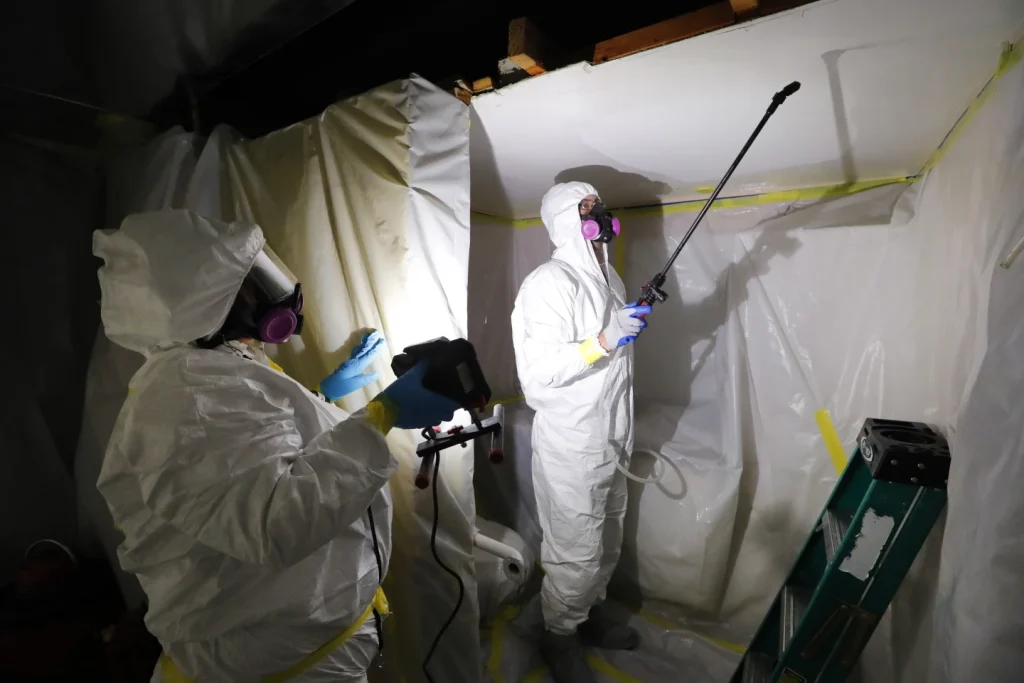The Environmental Protection Agency (EPA) made a groundbreaking announcement on Monday, revealing a sweeping ban on asbestos, a notorious carcinogen responsible for claiming the lives of tens of thousands of Americans annually.
Despite its well-documented dangers, asbestos continues to be utilized in certain products like chlorine bleach, brake pads, and various other items.
This definitive ruling represents a significant expansion of EPA regulations as mandated by a pivotal 2016 law that revamped the oversight of tens of thousands of toxic chemicals present in everyday goods, ranging from household cleaners to clothing and furniture.
The newly introduced rule specifically targets chrysotile asbestos, the sole remaining form of asbestos still in use within the United States.
This substance is commonly found in products such as brake linings and gaskets, and is integral to the manufacturing of chlorine bleach and sodium hydroxide, also known as caustic soda, including variants employed in water purification processes.
EPA Administrator Michael Regan hailed the final rule as a crucial stride towards safeguarding public health. In his statement, Regan emphasized the gravity of the ban, highlighting that asbestos has been prohibited in over 50 countries due to its hazardous nature.
He underscored the protracted journey leading to this historic ban, attributing its realization to the amendments enacted by Congress in 2016 to rectify the Toxic Substances Control Act, the primary legislation overseeing chemical usage in the U.S.
The detrimental health effects of asbestos exposure are well-documented, with established links to lung cancer, mesothelioma, and numerous other malignancies.
Shockingly, asbestos-related illnesses account for over 40,000 deaths annually in the U.S. The cessation of ongoing asbestos usage aligns with the objectives of President Joe Biden’s Cancer Moonshot initiative, a comprehensive governmental endeavor aimed at eradicating cancer within the nation.
Regan reiterated the unequivocal scientific consensus on asbestos as a known carcinogen with profound repercussions for public health.
He characterized this ban as just the initial phase in a broader mission to shield all American families, workers, and communities from the perils posed by toxic chemicals.
The 2016 law, known as the Frank Lautenberg Chemical Safety Act, empowered the EPA to institute new regulations governing a myriad of toxic substances prevalent in everyday commodities, including long-recognized carcinogens like asbestos and trichloroethylene.
These substances, despite their established cancer-causing properties, had previously evaded comprehensive federal oversight.
The legislation sought to streamline the patchwork of state regulations concerning chemicals and modernize the outdated Toxic Substances Control Act of 1976, which had remained largely unchanged for four decades.
While the EPA initially prohibited asbestos in 1989, a subsequent 1991 Court of Appeals ruling significantly curtailed the agency’s authority under the Toxic Substances Control Act to address health risks stemming from asbestos and other existing chemicals.
The 2016 law mandated the EPA to conduct thorough evaluations of chemicals and implement safeguards against unreasonable risks.
Asbestos, once a ubiquitous component in home insulation and various other products, has been banned in more than 50 countries, with its usage in the U.S. steadily declining over the years.
Presently, the only form of asbestos still imported, processed, or distributed for use in the U.S. is chrysotile asbestos, primarily sourced from Brazil and Russia.
This variant is predominantly employed by the chlor-alkali industry, which manufactures bleach, caustic soda, and similar products.
The EPA’s resolute stance on asbestos represents a pivotal moment in the ongoing battle to protect public health and underscores the agency’s commitment to enacting stringent regulations to mitigate the risks posed by hazardous substances.
This ban not only signifies a crucial victory in the fight against cancer-causing agents but also heralds a new era of heightened vigilance and accountability in chemical regulation.
The gradual discontinuation of consumer products historically containing chrysotile asbestos marks a significant shift in the landscape of product safety and regulation.
Concurrently, the utilization of asbestos diaphragms in chlor-alkali plants for chlorine and sodium hydroxide production in the United States is undergoing a transformation.
With only eight chlor-alkali plants still employing asbestos diaphragms, primarily situated in Louisiana and Texas, the Environmental Protection Agency (EPA) has taken steps to address this issue.
The EPA’s recent ruling entails banning the import of asbestos for chlor-alkali production upon publication, with a phased prohibition on its use over a period of five or more years to facilitate a smooth transition.
This regulatory measure reflects a broader effort to reduce reliance on asbestos products and mitigate associated health risks.
Moreover, the EPA’s decision to enforce a ban on most other asbestos uses within a two-year timeframe underscores the urgency of addressing asbestos-related hazards.
Stakeholder responses to these regulatory developments vary, with organizations like the National Association of Clean Water Agencies expressing support for the EPA’s initiative to phase out asbestos products.
However, concerns have been raised regarding potential disruptions in the supply chain of chlorine and sodium hydroxide, necessitating a transition period of up to 15 years according to the American Chemistry Council.
Furthermore, the impending ban on asbestos in specific applications such as oilfield brake blocks and automotive components signifies a concerted effort to curtail asbestos exposure across various industries.
The EPA’s provision allowing the use of asbestos-containing sheet gaskets at the Savannah River Site until 2037 highlights the importance of ensuring safe disposal practices in critical facilities.
Scott Faber of the Environmental Working Group commended the EPA for its decisive action in banning asbestos, emphasizing the significance of prioritizing public health in regulatory decisions.
This sentiment is echoed by Senator Jeff Merkley, who emphasizes the need for continued vigilance in phasing out hazardous asbestos fibers and advocating for enhanced health protections.

In parallel, the EPA’s evaluation of legacy asbestos uses in older buildings underscores the ongoing commitment to assessing and addressing potential health risks associated with asbestos exposure.
By aligning with global efforts to regulate asbestos use, the United States is taking a crucial step towards safeguarding public health and promoting safer workplace environments.
As the EPA continues to evaluate and implement measures to mitigate asbestos-related risks, collaboration between regulatory bodies, industry stakeholders, and advocacy groups will be essential in ensuring effective enforcement and compliance.
The evolving regulatory landscape surrounding asbestos underscores the imperative of proactive risk management and the prioritization of public health in policy decisions.
